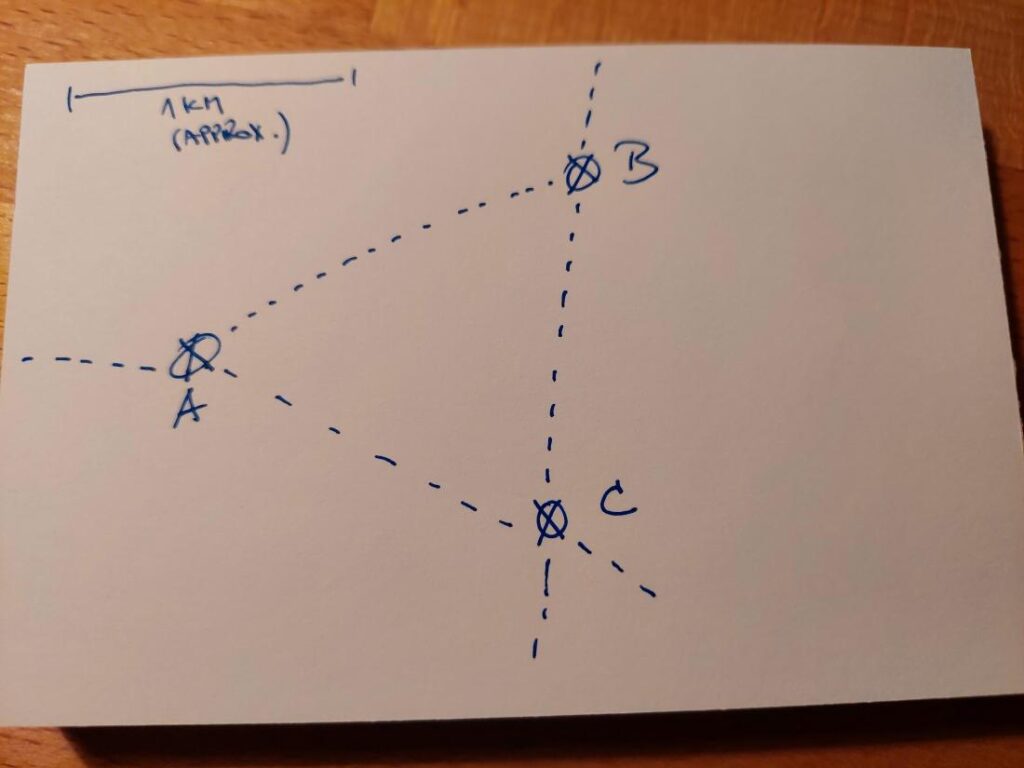Each time demands a different lifestyle, and since the current time dictates a healthy and balanced style, I started running.
Far from being Abebe Bikila, a light trot along the roads between the villages where I live. The topographical situation of the area where I run could be expressed as an equilateral triangle, where the vertices represent villages, let’s call them A, B and C. An explanatory schematic image for this:
In addition to the topographical impact of the situation, the genius loci of the place can also be characterized, for example: a boring Czech landscape with collective farm roads, bad asphalt roads and the occasional fruit tree or bush. To add to the local color, it is also necessary to add old tyres thrown into ditches on the outskirts of villages, the so-called standard waste management of Sudeten rednecks. And this short reflection will be about these tyres today.
The thing about tires (as well as construction debris) is that they are an extremely ungrateful type of waste. At the end of their useful life, it is necessary to take them to a designated place (= a specialized collection yard), which does not have to be a short distance away, and even there this service is strictly quota-based (“only two tires a year, young man”). In combination with several God-loving Czech characteristics (apathy towards public space and the Balkan approach to garbage, for example) this leads to the fact that it is easier to simply throw old worn-out tires in “no man’s land” behind the village. The result then looks roughly as follows.
During my experiments in jogging, when I regularly ran between villages A, B and C, I noticed a certain spatial pattern in the distribution of tires – tires were concentrated closer to the edges of the villages and thinned out halfway between the villages. And my archeological heart rejoiced, because this pattern completely classically corresponded to the model of the spatial distribution of waste around the settlement components in the sense of “kernel density”. Just as if created for some kind of heat map and demonstration of spatial distributions of waste management (“here, please, professor, you can see the radius of component A, the radius of component B, etc….”).
However, my enthusiasm was soon tamed after a conversation at a local pub in the village where I live (i.e. Village A). In addition to archeological aspirations, I am also a local resident and I have solved the problem of, well, what about used tires. And from the local bards of beer culture and waste management, I was taught the following for free:
“What would you do with it, throw it in the ditch behind the village. But not near our village, drive to the next one, maybe B and dump it there… Everyone do it…”
So much for the kernel density housing component… Waste from A is gathered near B and vice versa…



